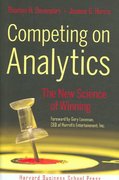Question
1. Sally Corporation is financed with 40% debt and 60% common equity. They estimate that their after-tax cost of debt is 6% and their cost
1. Sally Corporation is financed with 40% debt and 60% common equity. They estimate that their after-tax cost of debt is 6% and their cost of common equity is 9%. What is Sallys weighted average cost of capital?
2. Alice Corporations has two divisions. The one in the high-risk industry has a beta of 1.5 and can be financed optimally in line with others in the industry at 25% debt and 75% equity. The low risk division has a beta of .8 and based on industry averages, can be financed optimally at 50% debt and 50% equity. Assuming the risk-free rate of re-turn on 10-year government securities is 2.7% and the market risk premium is 5%. What is the estimated cost of common equity for the high-risk division?
3. Continuing from the prior problem, what is the estimated after-tax cost of equity for the low-risk division?
4. Still working with Alice Corporation and the information from the prior two problems, assume that the after-tax cost of debt for the high-risk division is 6% and the after-tax costs of debt for the low-risk division is 5%. What are the weighted average divi-sional costs of capital for each division?
Step by Step Solution
There are 3 Steps involved in it
Step: 1

Get Instant Access to Expert-Tailored Solutions
See step-by-step solutions with expert insights and AI powered tools for academic success
Step: 2

Step: 3

Ace Your Homework with AI
Get the answers you need in no time with our AI-driven, step-by-step assistance
Get Started


